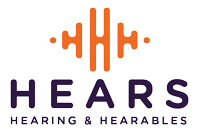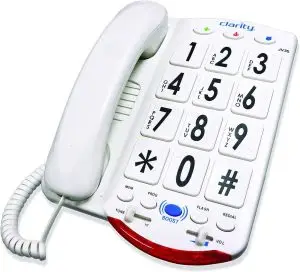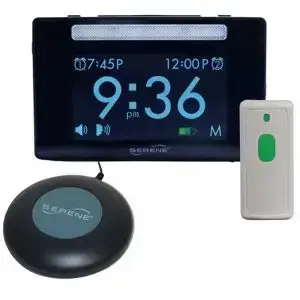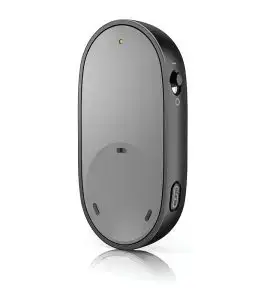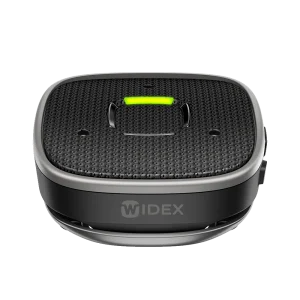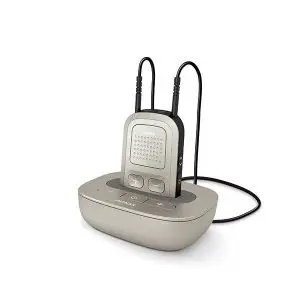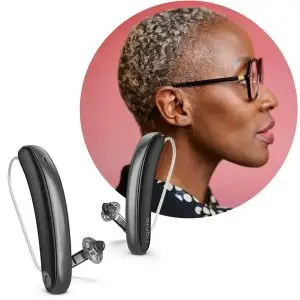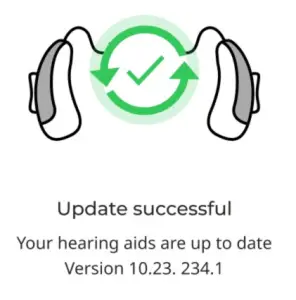Connecting the World: A Comprehensive Guide to Phones for People with Hearing Aids and Hearing Impairments
In today’s connected world, communication is key. Advancements in technology has opened up a world of possibilities for individuals with hearing impairments and for those who wear hearing aids. Tailored phones with features designed to enhance accessibility have become increasingly prevalent. Offering a range of solutions to meet diverse needs. In this blog, we’ll explore the various types of hearing aid phone solutions available for people with hearing aids and impairments. Ensuring they can stay connected seamlessly.
Hearing Aid Compatible Phones: A Harmonious Pairing
In a significant leap towards seamless connectivity for individuals with hearing impairments, newer smartphones are now equipped with Bluetooth capabilities that directly connect to compatible hearing aids. Thus eliminating the need for intermediary accessories. This breakthrough integration enhances the overall user experience. Allowing for a direct and wireless link between the phone and the hearing aid. As a result, users can enjoy crystal-clear phone calls, music, and other audio content without the hassle of additional devices.
This technology not only streamlines the communication process but also reflects a commitment to inclusivity. Ensuring that individuals with hearing impairments and hearing aids can fully leverage the capabilities of modern smartphones without compromising on clarity or convenience. The direct Bluetooth connection represents a transformative step towards creating a more accessible and integrated communication experience for users in the digital age.
Some phones are equipped with telecoil technology, reducing interference and allowing users with hearing aids to enjoy clearer calls without feedback or background noise. This ensures a more comfortable and effective communication experience. While in the past the T-coil in the hearing aid made that automatic connection. Now in current hearing aid technology, the user has to change the program into a t-coil program. If you don’t know what T coil is here is another blog you can read about it.
Captioned Phones: Written Words Speak Volumes
Captioned phones bridge the communication gap for those with hearing impairments. They are even helpful for those who also use hearing aids by providing real-time captions of the conversation. This type of phone is particularly useful for individuals who may struggle with understanding spoken words. Captioned phones can be either landline or mobile, offering flexibility in usage. There is nothing not to like about a captioned phone for those people with severe hearing impairment and/or for those who use hearing aids.
Amplified Phones: Boosting Clarity for Better Conversations
Designed with built-in amplification features, these phones cater to individuals with varying degrees of hearing loss. Whether they wear a hearing aid or not. Amplified phones allow users to adjust the volume of incoming calls, making conversations clearer and more audible. Some models even offer tone control and adjustable frequency settings for a personalized listening experience. When purchasing an amplified phone for your hearing impairment, make sure it has enough amplification to meet your hearing needs. Think about if you are going to be on the phone with or without your hearing aid as you consider the amount of amplification you need. Phones range from 5 dB of amplification to 50 dB.
Smartphones with Accessibility Features: The Power of Innovation
Modern smartphones often come with a host of accessibility features. Therefore making them inclusive for users with diverse needs with their hearing aids. These features may include adjustable font sizes, vibration alerts, and screen readers. Additionally, some smartphones allow users with hearing loss to customize audio settings. Enabling them to fine-tune their devices according to their hearing preferences and hearing aids.
Hearing Aid Accessories: The Middle Man Between the Phone and the Hearing Aid
Phone streamers such as the Sound Assist or Com-Dex by Widex, the StreamLine Mic from Signia, and other intermediary devices from Resound, Starkey, Unitron, and Phonak hearing aids play a pivotal role in revolutionizing the connectivity between Bluetooth-enabled phones and hearing aids for those people with hearing impairments.
These devices act as proprietary bridges. Seamlessly linking the phone to the hearing aid, thereby transforming the hearing aid into a wireless headset. The proprietary connection ensures a reliable and high-quality audio stream directly into the hearing aids. Allowing users with hearing impairments to enjoy phone calls, music, and other media with enhanced clarity and personalized sound settings.
This technology not only simplifies the user experience but also empowers individuals with hearing impairments to stay effortlessly connected in an increasingly mobile and interconnected world. At the intersection of innovation and accessibility, these phone streamers are transforming the landscape of hearing aid technology. Providing a bridge to a more connected and inclusive future.
Video Phones: Seeing is Believing
For individuals who rely on sign language or lip-reading, video phones provide an invaluable communication tool for those with severe hearing loss. These phones facilitate video calls, allowing users to communicate through sign language or by lip-reading. Video phones come in both traditional landline and smartphone formats, providing flexibility for users based on their preferences. There are programs like Facetime, Zoom, Google Meets, and other video telecalls. Hears to U, Hearing & Hearables also likes to use teleaudiology video calls to help aid with communication for those who are hearing impaired.
Voice-to-Text Apps: Transforming Spoken Words into Written Text
Voice-to-text apps have gained popularity as an auxiliary solution for individuals with hearing impairments and hearing aids. These apps transcribe spoken words into written text in real time, enabling users to read and respond to conversations easily. This feature is often available on smartphones, making it a convenient option for those on the go.
Relay Services: Enhancing Telecommunication Accessibility
Telecommunication relay services bridge the communication gap between individuals with hearing impairments and those without. These services involve an intermediary who translates spoken words into text or sign language and vice versa, facilitating smooth communication in both directions.
Final Remarks for People with Hearing Loss and Hearing Aids:
In the ever-evolving landscape of communication technology, there is a diverse array of phones and services designed to meet the unique needs of individuals with hearing aids and impairments. From hearing aid-compatible phones to video phones and voice-to-text apps, these innovations empower users to stay connected and engaged in the digital world. As technology continues to advance, the future holds even more promise for enhanced accessibility and seamless communication for everyone.
At Hears Hearing & Hearables, we take pride in offering a curated selection of phones tailored to the diverse needs of individuals with hearing impairments and various hearing aids. Our lineup includes amplifying phones designed to enhance clarity and volume, ensuring that conversations are crisp and audible. We offer love our hearing aid accessories to help you hear better on the phone.
For those who benefit from visual aids, our closed captioning phones provide real-time written captions during calls, making communication seamless and accessible. Additionally, we offer phone streamers that seamlessly connect with hearing aids, allowing users to stream calls directly to their devices. This integration not only ensures a more personalized listening experience but also adds a layer of convenience for our customers.
At Hears to U, Hearing & Hearables in Minnesota, we are committed to providing cutting-edge individualized solutions that empower individuals with hearing impairments to stay connected, fostering a world where communication knows no boundaries.
